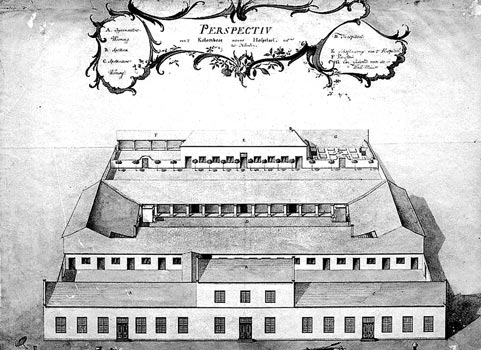
The Dutch Hospital in Fort, also known as the Old Colombo Dutch Hospital, is a historic building located in the heart of Colombo, Sri Lanka. Built in the 17th century by the Dutch East India Company, this hospital has now been transformed into a popular shopping and dining destination. In this article, we will explore the history of this iconic building and its current role in fort healthcare and tourism.
The Dutch Hospital was originally built in 1681 as a hospital for the Dutch sailors and soldiers who were stationed in Sri Lanka. It was strategically located in the fort area, which was then the center of trade and commerce in Colombo. The hospital was designed in the typical Dutch colonial style, with a central courtyard and arched colonnades. It was also equipped with a pharmacy, a surgery room, and a chapel for the patients.
The earliest known reference to the hospital dates back to 1677 when a German soldier named Christopher Schweitzer mentioned it. This adds to the historical significance of the Dutch Hospital and highlights its importance during the Dutch colonial era.
History of the Dutch Hospital
The Dutch Hospital was originally built in 1681 as a hospital for the Dutch sailors and soldiers who were stationed in Sri Lanka. It was strategically located in the fort area, which was then the center of trade and commerce in Colombo. The hospital was designed in the typical Dutch colonial style, with a central courtyard and arched colonnades. It was also equipped with a pharmacy, a surgery room, and a chapel for the patients.
Transformation into a Shopping and Dining Destination
In the early 19th century, the Dutch Hospital was taken over by the British and used as a police station and a post office. However, with the decline of the fort area as a commercial hub, the building fell into disrepair. In 2011, the Dutch Hospital was renovated and transformed into a shopping and dining complex by the Urban Development Authority of Sri Lanka. The restoration project aimed to preserve the historic architecture of the building while giving it a new purpose.
Today, the Dutch Hospital is a bustling hub of activity, with a variety of shops, restaurants, and cafes. The central courtyard has been converted into an open-air dining area, surrounded by the original colonnades. The shops inside the building offer a mix of local and international brands, making it a popular shopping destination for both tourists and locals.
Fort Healthcare
Apart from its role as a shopping and dining destination, the Dutch Hospital also plays a significant role in fort healthcare. The building is home to a number of medical clinics and pharmacies, making it a convenient location for those seeking medical services in the fort area. The Dutch Hospital also houses a wellness center, offering a range of services such as acupuncture, yoga, and Ayurvedic treatments.
Tourism and Cultural Events
The Dutch Hospital has become a popular tourist attraction in Colombo, with its historic charm and vibrant atmosphere. The building also hosts a variety of cultural events throughout the year, including art exhibitions, music concerts, and food festivals. These events not only attract tourists but also promote local artists and businesses.
Preserving the Heritage
The restoration of the Dutch Hospital has not only given it a new purpose but has also helped preserve its heritage. The building has been recognized as a national heritage site by the Sri Lankan government and has won several awards for its restoration. The Dutch Hospital is a testament to the rich history and cultural diversity of Sri Lanka, and it continues to be a source of pride for the country.
In conclusion, the Dutch Hospital in Fort is not just a building, but a symbol of the country’s past and present. It serves as a reminder of the Dutch colonial era and its impact on Sri Lanka, while also contributing to the local economy and healthcare sector. If you ever find yourself in Colombo, be sure to visit this iconic landmark and experience its unique blend of history, culture, and modernity.